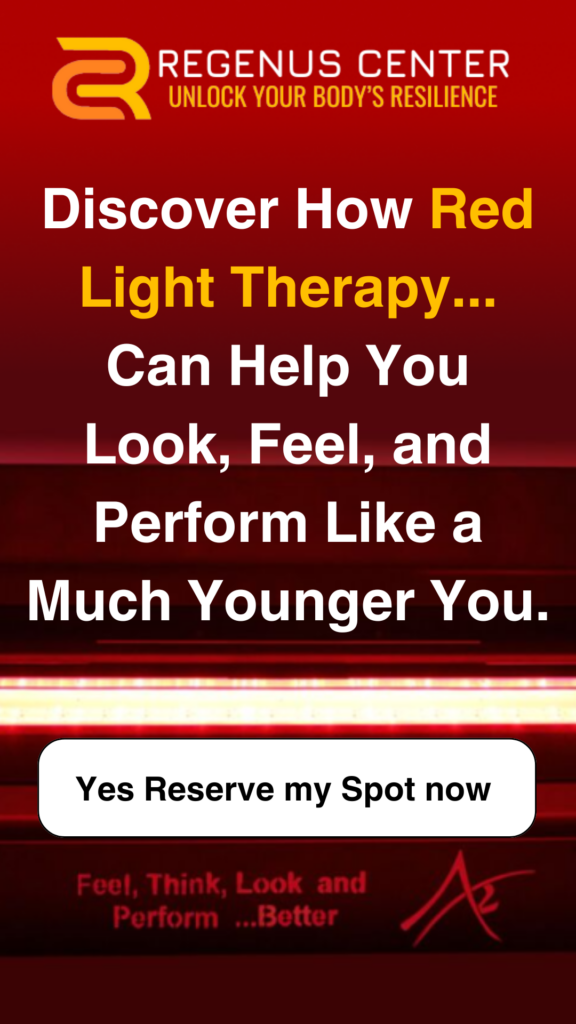How Does Red Light Therapy (Photobiomodulation) Affect the Brain?
Red Light Therapy (RLT), also known as Photobiomodulation (PBM), has shown promising effects on brain health, particularly in its neuroprotective capacities and cognitive enhancement. Research indicates that RLT can play a supportive role in managing symptoms of neurological disorders such as Alzheimer’s disease, Parkinson’s disease, and traumatic brain injury (TBI).
Mechanisms of Action
RLT uses specific wavelengths of light to penetrate the skin and reach the brain, where it interacts with cells at a mitochondrial level. The therapy is believed to reduce oxidative stress and inflammation in brain tissues, often elevated in neurodegenerative conditions. By enhancing mitochondrial function, RLT promotes the production of adenosine triphosphate (ATP), the energy currency of cells, which is critical for repairing and regenerating damaged neurons.
Cognitive Enhancement
In addition to its neuroprotective effects, studies suggest that RLT can improve cognitive functions like memory, attention, and executive function in healthy individuals and those suffering from cognitive decline. The therapy stimulates cerebral circulation, increasing blood flow and oxygen availability to the brain. This boost in cellular energy production may improve cognitive performance and offer a defense against neurodegenerative diseases.
Applications in Neurological Disorders
RLT has shown potential in improving outcomes for individuals with neurological disorders. For example:
- Alzheimer’s Disease: Research suggests that RLT can reduce the buildup of amyloid plaques, a hallmark of Alzheimer’s, and alleviate neuroinflammation, which contributes to disease progression.
- Parkinson’s Disease: In animal models, RLT has been found to protect dopaminergic neurons, the cells that are lost in Parkinson’s disease, thereby slowing disease progression.
- Traumatic Brain Injury (TBI): Several studies have demonstrated that RLT can improve cognitive and motor functions in individuals recovering from TBI, likely due to its anti-inflammatory and neurodegenerative effects.
Mitochondrial Function and Neurogenesis
One of the most critical aspects of RLT is its ability to enhance mitochondrial function. Mitochondria are the powerhouse of cells, and their efficiency is essential for energy production. In brain cells, improved mitochondrial function can lead to increased neurogenesis (the production of new neurons) and synaptogenesis (the formation of new synapses), both vital for learning, memory, and overall brain health.
Conclusion
Red Light Therapy (RLT) is a non-invasive, drug-free method of supporting brain health. It offers both protective and restorative benefits. Whether used to manage symptoms of neurological disorders or enhance cognitive function in healthy individuals, RLT can improve overall brain resilience.
References:
- Hamblin, M. R. (2016). Mechanisms and applications of the anti-inflammatory effects of photobiomodulation. AIMS Biophysics, 3(3), 336-361.
- Salehpour, F., et al. (2018). Photobiomodulation therapy for Alzheimer’s disease: A systematic review of preclinical and clinical studies. Journal of Alzheimer’s Disease, 65(4), 1323-1346.
- Johnstone, D. M., et al. (2014). Photobiomodulation reduces neurodegeneration in models of Parkinson’s disease. PLoS ONE, 9(1), e90448.
- Zhao, Z., et al. (2019). Low-level light therapy and Parkinson’s disease: Evidence from clinical trials and animal studies. Journal of Neuroscience Research, 97(1), 17-23.
- Henderson, T. A., & Morries, L. D. (2017). Near-infrared photobiomodulation for traumatic brain injury: An open-protocol study of clinical outcomes and cerebral metabolic state. Journal of Neurotrauma, 34(7), 1202-1216.
- Naeser, M. A., et al. (2014). Improved cognitive function after transcranial, light-emitting diode treatments in chronic, mild traumatic brain injury: Two case reports. Photomedicine and Laser Surgery, 32(9), 479-487.
- Fitzgerald, M., & Munsch, C. (2019). Red light therapy and mitochondrial health: Implications for brain injury recovery. Frontiers in Cellular Neuroscience, 13, 332.
- Rojas, J. C., & Gonzalez-Lima, F. (2011). Low-level light therapy of the eye and brain. Eye and Brain, 3, 49-67.



